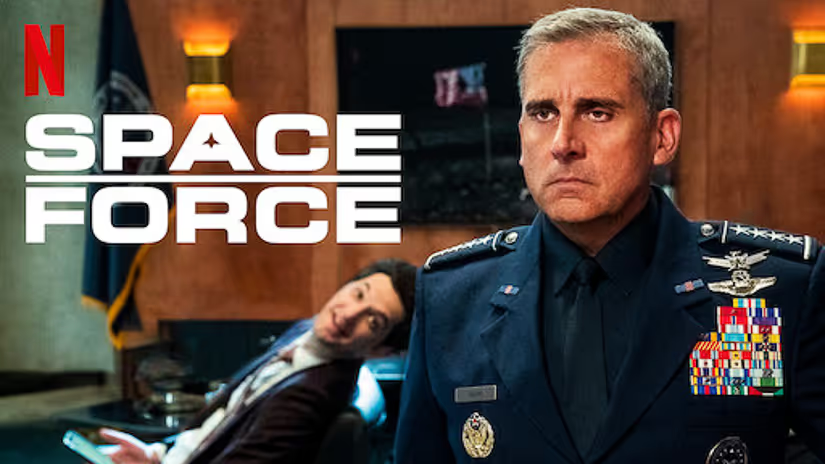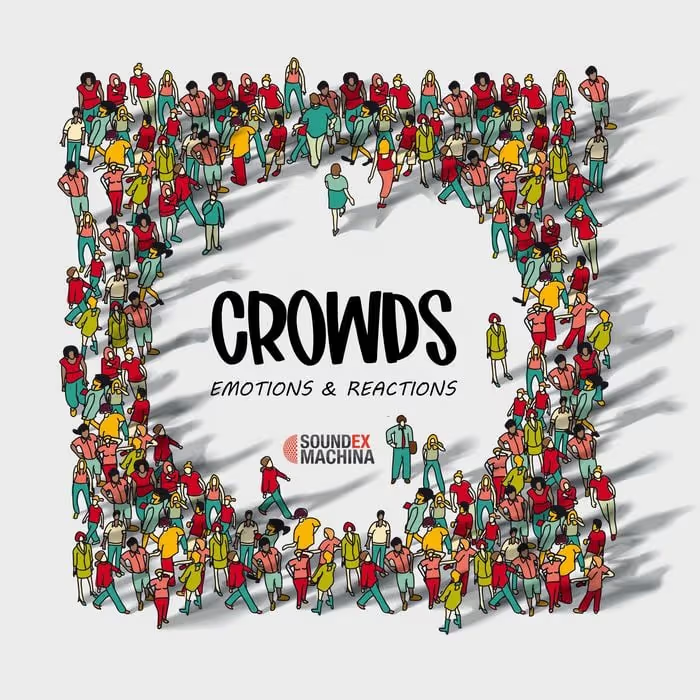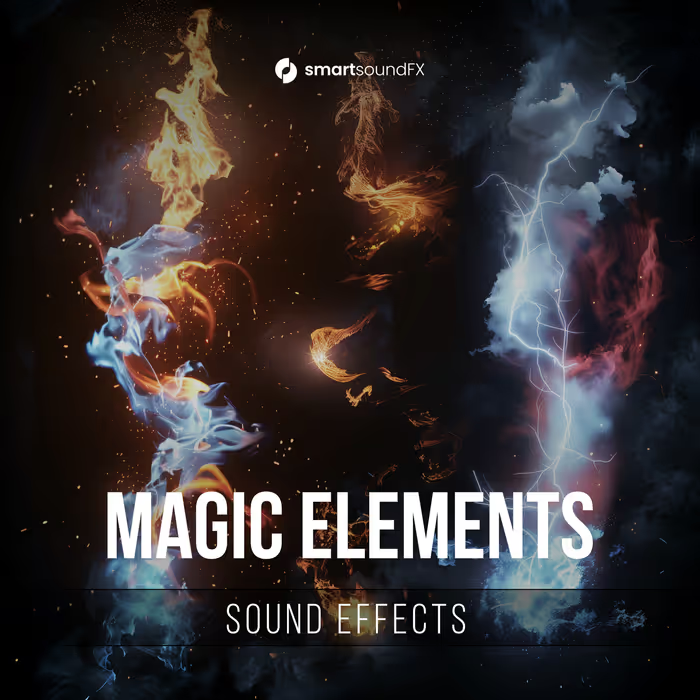Netflix’s Space Force is not a serious space drama like The Expanse. It’s not an advanced-tech filled exploration of deep space like Star Trek. It’s more like a Parks and Recreation approach to outer space. A new government/military branch called Space Force, led by Steve Carell as General Naird, is tasked with putting boots on the moon in 2024. Space Force is the epitome of government mediocrity, which supplies endless fuel for the series’ hilarity.
The show is all about the comedy. And while there are a few opportunities for sci-fi sound design, it’s mostly practical, realistic sounds supplied by the Foley team. Performing Foley for comedy is something Foley artist Vincent Guisetti and Foley mixer Aran Tanchum know a bit about. They’re kind of experts, actually, having years of experience working on animated shows like SpongeBob SquarePants and all those Lego DC Comics Super Heroes: Justice League animated videos like Attack of the Legion of Doom!, Cosmic Clash, and Gotham City Breakout — which if you have kids and love Legos then you’ve probably watched a gazillion times (like me!).
They’ve each done tons of live-action comedies, too, like last year’s Booksmart, HBO’s Silicon Valley, Talladega Nights: The Ballad of Ricky Bobby, Superbad, Pineapple Express , Zombieland, and many more.
Here, Guisetti and Tanchum talk about Foley for comedy and share specifics on Space Force scenes where Foley is in on the joke.
https://www.youtube.com/watch?v=l4mY2asIjWk
Space Force | Official Trailer | Netflix
When performing Foley for comedy films or series, do you approach it differently? What are some tips for doing Foley for comedy?
Vincent Guisetti (VG): I do what I call the ‘hero mix.’ For example, when Steve Carell (as General Naird) is walking or for any of his movements, I add a bit more strength to it. I walk him a bit bigger and his grabs are a bit bigger. So he always sounds like the lead character.

Aran Tanchum (AT): If this was The Office, I don’t know that we’d do anything differently than for a typical live-action show. But Space Force has elements that are more over-the-top.
For instance, they have those exo-suits in Ep. 5 “Space Flag,” and the sound effects editors put in all these awesome servo sounds. The exo-suits from Lockheed are covered in balloons and so we did a lot of balloon sounds and the editors cut in a bunch too. But that’s something you’d never do for a normal comedy. So, we got to do that and exaggerate those sounds because the guys are running around with a bunch of balloons on their suits during this battle. It’s part of the comedy and so we try to bring that out.
There are many moments in each episode that calls for Foley to be a bit more over-the-top. Like in Ep. 4 “Lunar Habitat,” when they’re in the biodome on Earth and Steve is running laps around the inside and he trips over the didgeridoo. It’s a story point and you can really hear the didgeridoo rattling around on the floor as he trips over it.
For that, Vinny grabbed a bunch of poles and sticks that would sound like a didgeridoo.
VG: Because the actual prop might not give you the right sound.
AT: We want it to sound larger-than-life.
VG: Another favorite thing to perform was the ice cream cone splatter in Ep. 7 “Edison Jaymes,” when Erin (Diana Silvers) throws the ice cream cone all over the dashboard in the car. For that, I used a wet shammy. Wet shammies come in handy for horror films but they really come in handy for gooey, melty ice cream mush.
…he’s able to do more with a shammy than anybody that I’ve ever met. It’s incredible. And disturbing.
I’ve been doing shammy movement for such a long time. We do the Foley on SpongeBob SquarePants and I got a lot of experience with a shammy through that. I’ve spent hours on the ground with a shammy. So, I’m able to do really cool things with it.
Sometimes a slap with the shammy might be too hard of a hit for Aran. So, I’ll do something a bit more subtle to give it detail so it’s not just a slap.
AT: Vinny and I have been working together for over 15 years. I’ve worked with other Foley artists but mostly with Vinny. I can say that he’s able to do more with a shammy than anybody that I’ve ever met. It’s incredible. And disturbing.
VG: I’ve literally spent thousands of hours working with a shammy. I’ve been doing Foley since I was 20 and I’m now 52.
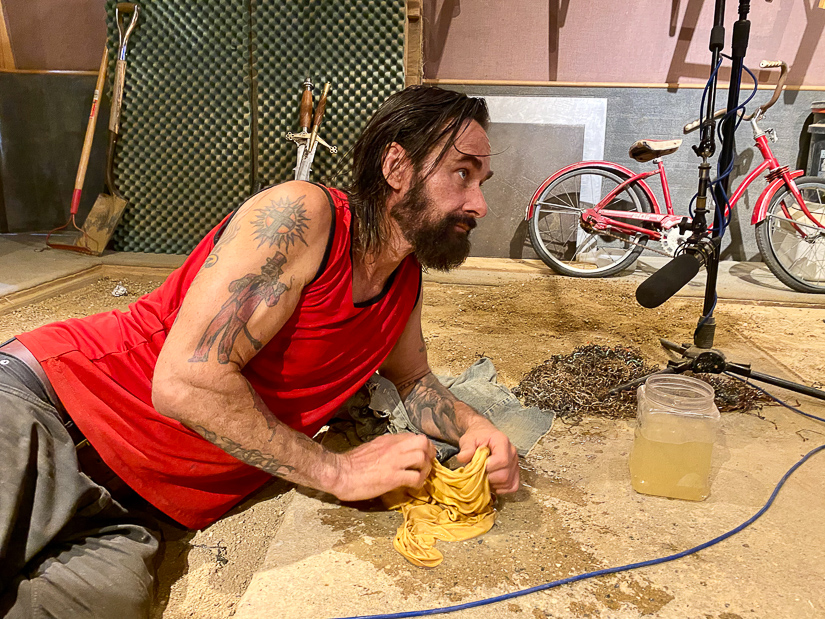
Foley is so creative. You’re listening for the way objects sound as opposed to what their practical applications are in real life…
VG: The only things you can’t fake are handcuffs, a Zippo lighter, and a Bic lighter. Everything else can be faked.
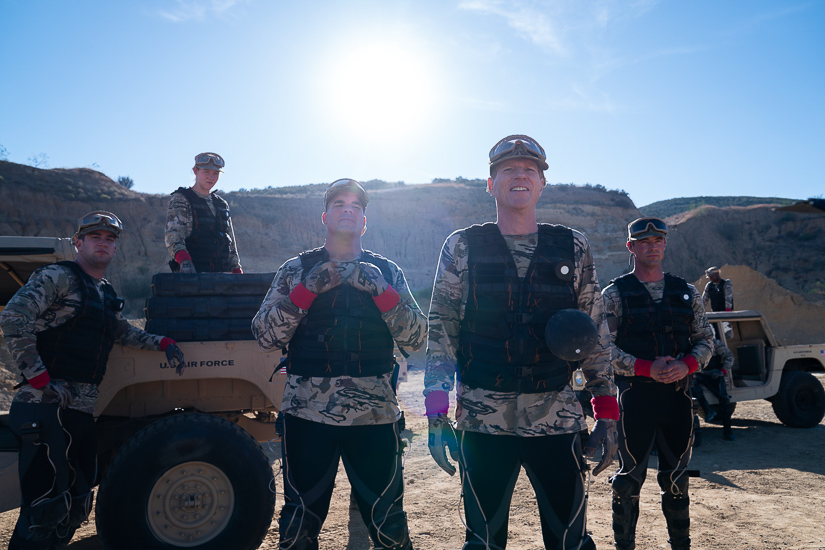
Let’s look at some other examples of how you used Foley to support the comedy in Space Force. Going back to the exo-suits in Ep. 5, what else did you Foley for those?
AT: We definitely did lots of balloons and we did some stretchy leather sounds for some of the movements. And as they’re running around, they have these BB guns and we did Foley for the gun handling.
That’s an interesting crossover between Foley and effects. Sean Garnhart (sound effects editor) cut in all the BB guns’ pump sounds. But there’s that scene where Steve is pumping it like a million times and some of the movements are really slow and so we had to fill in the gaps of the sound effects.
I was referencing Sean’s stem of the effects and filling holes with Foley gun movement. That was a cool example of how Foley and effects worked together to complete the sound.
I was referencing Sean’s stem of the effects and filling holes with Foley gun movement. That was a cool example of how Foley and effects worked together to complete the sound. We didn’t have a BB gun here, so we didn’t perform the pumping. We ended up cutting all of the mechanism sounds in to fill in the gaps.
VG: I have a couple prop guns and the shotgun was useful for the movements. There’s a little clicking mechanism on there and I can get that little click to go right in there. It worked out pretty well.
AT: Filling in the effects with more generic gun movement sounds seemed to work.
For the Raytheon exoskeleton, which allowed the Air Force team to jump higher and be more athletic, how did you handle those footsteps and impacts?
VG: Footsteps are my favorite thing to do, mostly because you have to be in the character. So if they’re running at top speed to go get someone then you have to run at top speed. You can’t fake it.
For Steve’s team, we did the ‘hero mix,’ making them bigger and giving them more thrust. In making their footsteps bigger than the other teams’ it actually sounds like there are two teams.
Foley artist Vincent Guisetti demonstrating his Foley performance technique
To make them bigger, is that a performance thing, or a mic placement thing?
VG: Aran likes to mic a certain place, so I keep it where he wants it. So, it’s more of a performance thing.
AT: In this case, you have a lot of people wearing the same types of shoes. We were trying to make Steve stand out a bit more, and the re-recording mixer helps with that as well.
We did tons of feet for this show. In all of those scenes where they’re standing around in that central lobby, there are people going up and down the stairs all of the time. We did tons of background feet but you mostly just hear the leads.
VG: There were a lot of stairs.

My favorite moment for feet was in the beginning of Ep. 3 “Mark and Mallory go to Washington.” Dr. Mallory (John Malkovich) storms up to Naird’s office, taking the steps two at a time, but he’s not allowed in because he forgot his ID badge in the lab. So he goes to retrieve it, and there’s this whole sequence of him stomping through the lobby, across the walkway, up the stairs and then back again to Naird’s office. That must have been fun to perform!
VG: That’s a really good example of being in character with the actor. It’s not just a footstep; it’s a performance.
AT: There’s a fun variety of surfaces and shoes on the show, with all the space suits and boots. We have footsteps in the spacecraft and the suit rustles in the biodome environment. We had to come up with those surfaces and textures. Even though a lot of the characters are dressed the same, there was a lot of variety.

How about the feet for Naird when he goes for a jog in the spacesuit outside the biodome?
AT: I think we used a soft, big sounding shoe.
VG: I have over a hundred different shoes. I had these big old boots for that one.
And for the spacesuit, I used a deflated rubber raft that has a bunch of holes in it. It turned out pretty cool because you hear him breathing inside the suit and then he falls and it’s a pretty big sound.
…for the spacesuit, I used a deflated rubber raft that has a bunch of holes in it.
AT: We did footsteps for the astronauts on the moon but when I watched the show, they didn’t play. Sometimes you can hear the footsteps filtered through their helmet mics, which is kind of cool. We didn’t treat the footsteps at all. I didn’t know how the re-recording mixers would handle them. But, you don’t hear any live sound. It’s all coming through the suit. It’s sort of like what they did in Gravity where you can hear the sounds but it’s more like transmissions through the craft and through the suit. That was pretty cool.
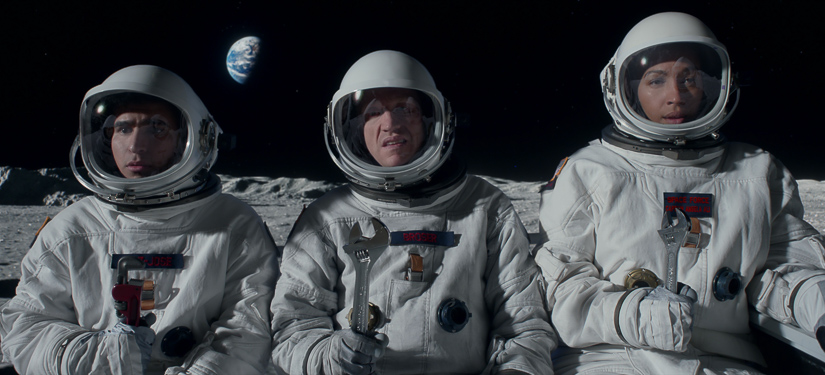
VG: It’s interesting when you watch a show like this without the Foley. You can see how much Foley grounds everything together. Every pencil drop, every chair scoot, every chair shift, every grab, every page turn… it’s everything. It took a full two days to shoot all that.
AT: There are a lot of shows where you don’t have this much Foley. It’s more sitcom-y. Or in some modern comedies, you don’t hear a lot of the Foley. So I was really pleased with how much of the Foley they used. It’s encouraging to work on a project and put a lot into it and then hear your work in the end. That’s not always the case.
VG: Unless it’s cartoons. 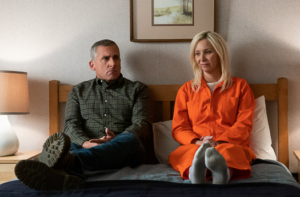
AT: A lot of times we do all this work and you don’t hear it. But on this show, they created moments where you need the Foley. Like, Ep. 8 “Conjugal Visit” where Steve is trying to get his wife’s jumpsuit off, but the zipper is stuck. We knew that was going to be all us, super important, so we had to get it right. We did a track of just jingles, a track of zipper moves, and a track of suit movements.
VG: It’s a good example of Foley for comedy. You want to hear the zipper. That will get played a bit louder.
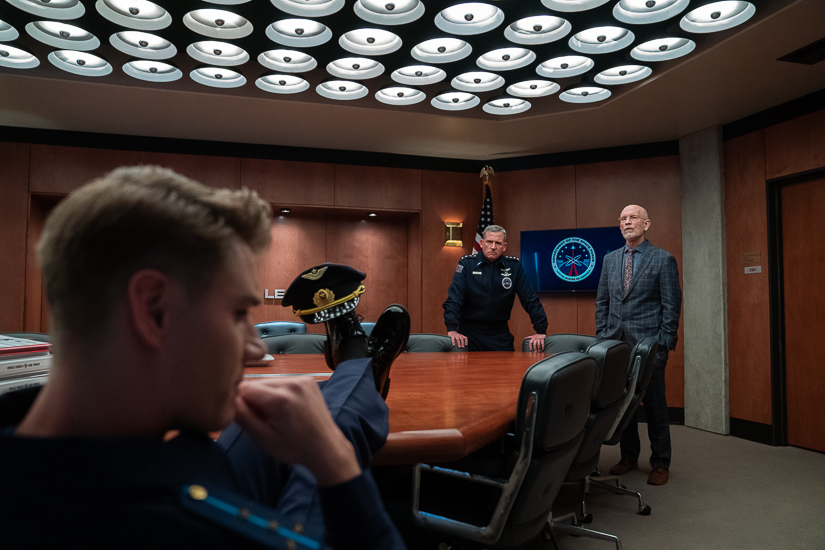
There are so many moments like that, where Foley is part of the joke. For example, in Ep. 6 “The Spy,” Naird tells Yuri (Alex Sparrow) to get his feet off the table. Yuri makes a big show of jumping out of the chair and fumbling with it afterward. It’s rattling and banging around…
VG: That was all us for sure.
AT: There were a lot of cool moments in the show that really needed Foley.
VG: As you’re working on the show, you notice all the pencil movements and typing and other prop sounds, but you know when it’s a Foley moment. We’ll go, “This is it.” We really take those moments.
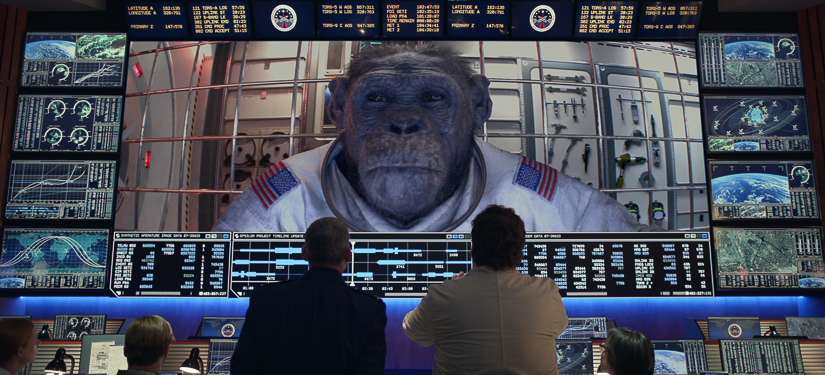
How about the monkey in space in Ep. 2 “Save Epsilon 6!” where he needs to exit the craft and drill the solar panels back on…
AT: That was actually the last episode we worked on because of the CG monkey. He’s not a real monkey and so all the movements — the cage interaction and the tools he touches — are going to be very important. We did suit movements for him and the cage, which I think they layered with other cage sound effects.
That sort of takes us back into animation territory where there is no production track. We have to create all the sound there.
VG: For the drill the monkey uses, I performed those sounds with a handgun. A handgun has a lot of great sound to it. You can use it for a drill, or a door handle. You can use it for just about any mechanism. A handgun really comes in handy for sure.
For a door handle rattle, I’ll often go to our studio door and put the handgun on the handle because it just rattles more.

[tweet_box]The Spectacular Foley of ‘Space Force'[/tweet_box]
Any other bits of sage wisdom you’d like to impart on the art of Foley for comedy?
AT: Our experience with animation really helps with playing up moments and choosing moments that are important. Depending on the material, if it’s a live action show then we’ll record it like a live-action show. But I think that our experience with animation really helped us to identify moments to play up the sound and record them a bit more exaggerated, a bit closer to the mic.
… I think that our experience with animation really helped us to identify moments to play up the sound…
VG: I’ll perform them differently too, a bit bigger, a bit louder. The didgeridoo is a good example. I performed four different layers for that. You want it to have impact.
Comedy sound is a bit quicker, a bit sharper. It’s not so relaxed.
AT: There are times when you want a sound to fit in and not jump out, and then other moments where you do want sounds to pop out a bit more. This show had room for that.
We did the last season of Silicon Valley and it was pretty similar to this show because there were moments for Foley to support the comedy. Most of it was office chairs, computers, hands on desks, and footsteps. But there were little comedy moments that we had to play up. We had to identify those moments and make them shine.
VG: A lot of the eating cues were fun to do. Like in Ep. 6 “The Spy” when Erin gives the ice cream to Duncan (the soldier who likes her, played by Spencer House) and it’s topped with Captain Crunch. It’s funny to hear him eating loudly while she’s talking to him. That was all me.
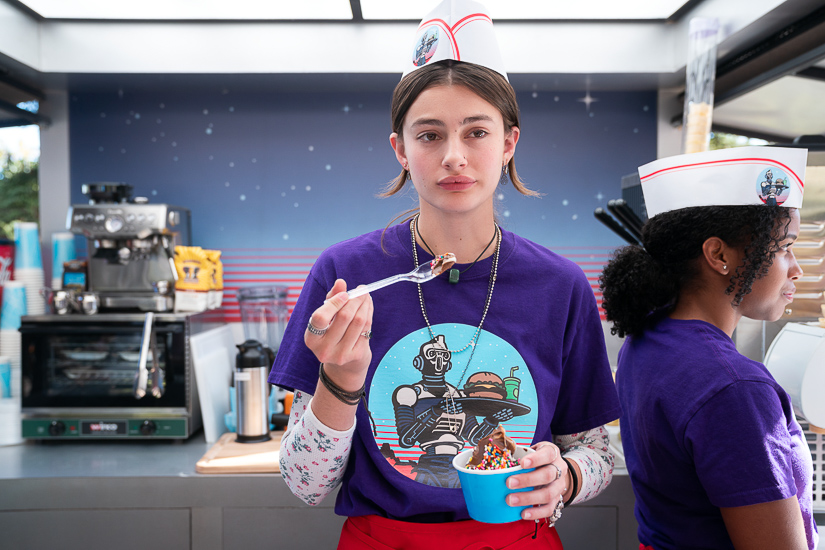
What’s your typical mic set up look like?
AT: We typically use two Neumann KMR 81s, which are short shotguns. We don’t have a huge room but there are surfaces to point a room mic at to get some reflections. So we have a main close-up mic and a room mic. Those are feeding into the same record track and I’m making the decision on how much room sound to add in the moment.
We have recorded with a large-diaphragm mic as the main mic but on shows like this it’s not super important. It’s more important to move quickly from one set up to another.
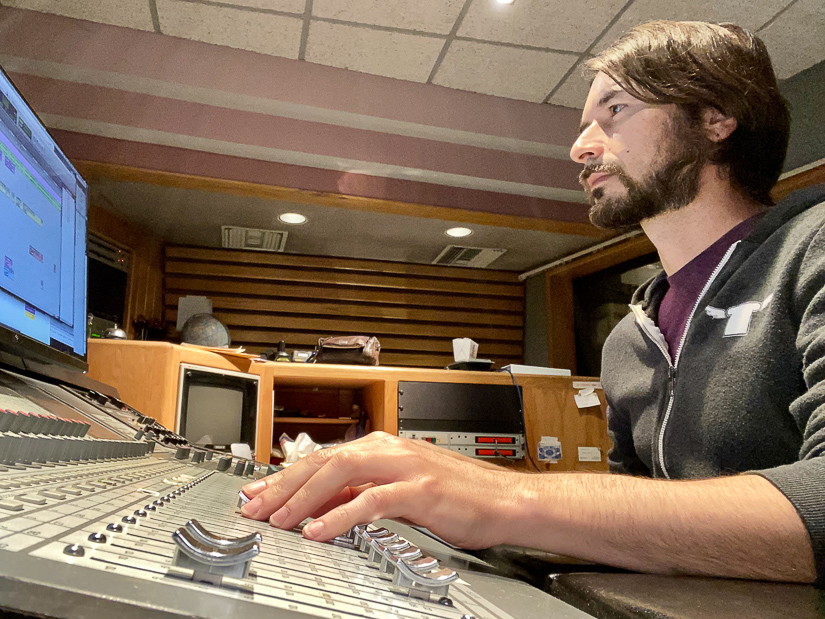
What stage are you on? Where is your studio?
AT: We work out of Sound Satisfaction, which is Gary Coppola’s stage in Burbank. It’s a great place. It’s been here since the 80s.
You’re a two-person Foley team, so I guess you’re COVID-19 safe?
AT: We’re each in a separate, isolated room. And we’re pretty much the only ones that work on the stage. There are other crews that come in here from time to time but they are really good with maintenance here and cleaning out the stage every week. We feel very comfortable.
VG: Doing this interview was the closest I’ve been to Aran in two months.
I’m glad you’ve been able to continue working safely through this pandemic…
AT: Me too. We’re very grateful for that.
A big thanks to Foley Artist Vincent Guisetti and Foley mixer Aran Tanchum for giving us a behind-the-scenes look at the sound of Space Force and to Jennifer Walden for the interview!

